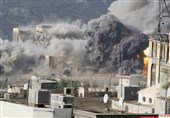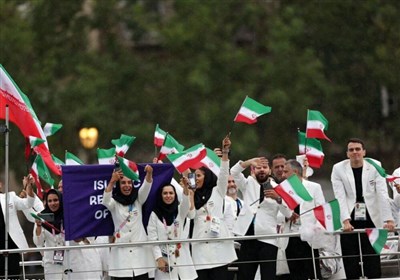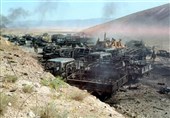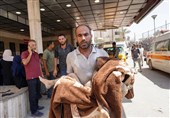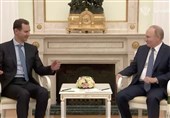One in Three Saudi Air Raids on Yemen Hit Civilian Sites, Data Shows
TEHRAN (Tasnim) – More than one-third of all Saudi-led air raids on Yemen have hit civilian sites, such as school buildings, hospitals, markets, mosques and economic infrastructure, according to the most comprehensive survey of the conflict.
The findings, revealed by the Guardian on Friday, contrast with claims by the Saudi government, backed by its US and British allies, that Riyadh is seeking to minimize civilian casualties.
The survey, conducted by the Yemen Data Project, a group of academics, human rights organizers and activists, will add to mounting pressure in the UK and the US on the Saudi-led coalition, which is facing accusations of breaching international humanitarian law.
It will refocus attention on UK arms sales to Saudi Arabia, worth more than £3.3bn since the air campaign began, and the role of British military personnel attached to the Saudi command and control center, from which air operations are being mounted. Two British parliamentary committees have called for the suspension of such sales until a credible and independent inquiry has been conducted.
Saudi Arabia disputed the Yemen Data Project figures, describing them as “vastly exaggerated”, and challenged the accuracy of the methodology, saying somewhere such as a school building might have been a school a year ago, but was now being used by Houthi fighters.
The independent and non-partisan survey, based on open-source data, including research on the ground, records more than 8,600 air attacks between March 2015, when the Saudi-led campaign began, and the end of August this year. Of these, 3,577 were listed as having hit military sites and 3,158 struck non-military sites.
Where it could not be established whether a location attacked was civilian or military, the strikes were classified as unknown, of which there are 1,882 incidents.
Saudi Arabia intervened in March 2015 to support the fugitive former Yemeni government against Houthis in control of the capital, Sana’a. The UN has put the death toll of the 18-month war at more than 10,000, with 3,799 of them being civilians.
The Yemen Data Project has chosen to focus exclusively on the impact of the air campaign, rather than fighting on the ground, citing the difficulty of gaining access to frontline fighting and impartial information.
One of the most problematic findings of the survey for Saudi Arabia is the number of reported repeat attacks. While some attacks on civilian sites can be explained away as mistakes or being the location of military camps in densely populated areas such as Sana’a, repeated strikes on school buildings and hospitals will add to demands for an independent investigation.
One school building in Dhubab, Taiz governorate, has been hit nine times, according to the data. A market in Sirwah, Marib governorate, has been struck 24 times.
The UK’s shadow defense secretary, Clive Lewis, said of the survey: “It’s sickening to think of British-built weapons being used against civilians and the government has an absolute responsibility to do everything in its power to stop that from happening. But as ministers turn a blind eye to the conflict in Yemen, evidence that humanitarian law has been violated is becoming harder to ignore by the day.”
The Liberal Democrat foreign affairs spokesperson, Tom Brake, said the data added more weight to calls for the suspension of arms sales. “Despite consistent evidence showing targeting of civilians, first Cameron and now May’s governments have continued their hypocritical defense of Saudi Arabia’s brutal campaign in Yemen,” he said.
Sixty-four members of the US Congress, from the Democratic and Republican parties, sent a letter to Barack Obama last month urging the president to postpone sales of new arms to Saudi Arabia. The US also provides the Saudis with intelligence, surveillance, reconnaissance and logistical support.
The Democratic congressman Ted Lieu, who organized the letter and is a colonel in the US air force reserve, said: “The actions of the Saudi-led coalition in Yemen are as reprehensible as they are illegal. The multiple, repeated airstrikes on civilians look like war crimes.”
Campaigners are calling for an independent inquiry to establish whether attacks on civilian targets are because of poor intelligence, lack of precision on the part of the Saudi-led coalition planes, or a high degree of disregard for civilian lives.
Staff at the Yemen Data Project said they adopted rigorous standards, using news reports aligned with both sides in the conflict and crosschecked against other sources, such as social media, non-governmental organizations and evidence on the ground.
According to the project, the Saudi-led coalition hit more non-military sites than military in five of the past 18 months. In October 2015, the figures were 291, compared with 208; in November, 126 against 34; December, 137 compared with 62; February 2016, 292 to 139, and March, 122 compared with 80.
Despite a ceasefire announced in April, air raids have continued.
Over the course of the war, the survey lists 942 attacks on residential areas, 114 on markets, 34 on mosques, 147 on school buildings, 26 on universities and 378 on transport.

